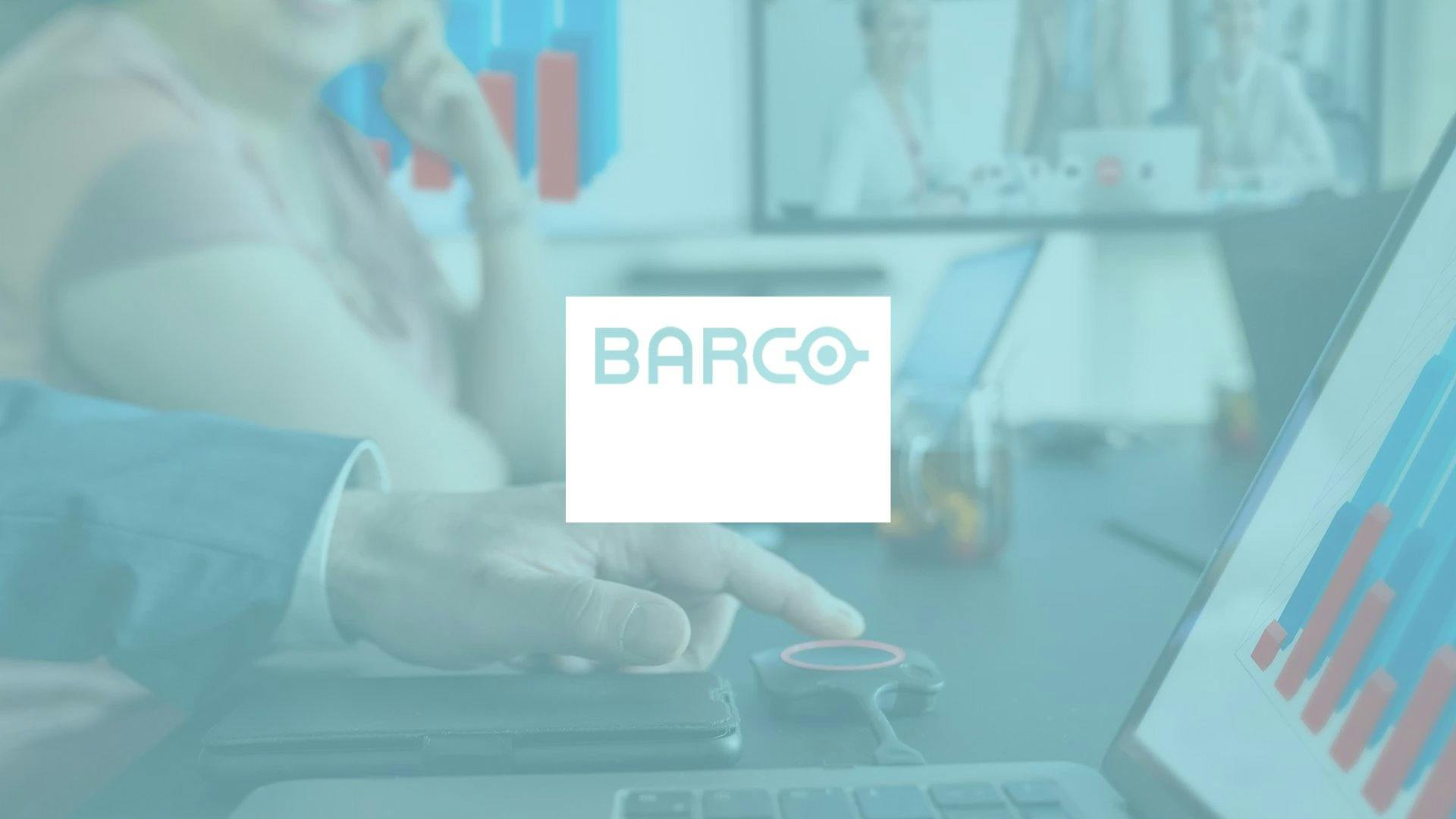Insight/Action/Outcome: Before using Amplitude, the Barco team saw user frustrations with its ClickShare product, but couldn’t pinpoint the problem. Using Amplitude Analytics, they discovered a common keyword in complaints was “connectivity,” showing users had trouble connecting to their meeting room. This helped the team prioritize this bug and increase the size of the passcode text, which led to a reduction in user frustration and the number of login attempts. Those changes helped increase the user connectivity rate by 20%, and ClickShare also saw a remarkable 25% increase in its active user base, which is expected to yield positive revenue change in 2024.
I imagine you've heard the parable of the visually impaired people and the elephant.
For the unfamiliar, the story begins with a group of people coming across an elephant. Never having encountered such an animal before, they attempt to understand what they're facing by feeling what's in front of them. One touches the tusk of the elephant and says, "It must be a spear!" Another feels the tail and exclaims, "This must be a rope!" Still another grabs the trunk of the elephant and declares, "It must be a snake!"
As we know, none of these individuals are correct. Each feels only a single part of the whole and cannot make sense of the bigger picture—they can only tell one part of the story from their own perspectives.
This is exactly what developing products is like without access to reliable behavioral data. Without trustworthy data, it’s harder to make informed decisions and slows down your team’s ability to rapidly improve experiences to drive growth.
Product development is a big part of what we do at Barco—one of the largest technology companies headquartered in Belgium. We focus on digital projection and imaging technology for industries in the entertainment, enterprise, and healthcare spaces. We've grown quite a bit since our humble beginnings in 1934. Today, we employ 3,200 people in 48 countries with more than 500 patents to our name.
I serve as the Technical Lead and Senior Software Engineer for ClickShare, our award-winning wireless presentation and conferencing system. ClickShare is designed to provide a seamless and user-friendly meeting experience so leaders can share information with colleagues even faster.
We built ClickShare around the meeting room of today, which includes both in-person and hybrid environments. Once you enter a physical meeting room, your existing central screen, speakers, and camera systems wirelessly connect with your laptop via the ClickShare Button or App. This allows teams to start meetings in seven seconds or less, leaving more time to focus on facilitating valuable presentations.
We designed ClickShare to be a scalable solution to an otherwise frustrating day-to-day problem. But we also hold ourselves to very high standards. While we had built a great product, we knew we could improve the user experience even more.
In the past, Barco focused on product development based on the ideas of product managers. Everyone made assumptions about which features to build, since we didn't have a data analytics platform to deliver the insights we needed to make data-driven decisions.
When looking at our user feedback, we noticed that many users were happy, but there was still room for improvement. In the events where we did get negative feedback from users, we didn’t have insights into why these low reviews occurred or what friction points users were experiencing in the product. Many would leave feedback like “The product doesn't work,” even though we could see the system was fully operational according to our observability tools.
It was clear users were frustrated with navigating ClickShare's experience. It was also clear we didn’t have the data insights to know exactly what was happening.
I could see it was time to dig deeper and look for a more objective solution—which, for Barco, was leaning more heavily into Amplitude.
Optimizing Amplitude to improve performance and user satisfaction
Barco had used Analytics long before I joined, but I knew we could use Analytics more deeply to assist with making better product decisions. I felt we could harness the potential of Analytics to generate truly meaningful product insights to drive growth.
A major differentiator with Analytics is its simplicity.
A major differentiator with Analytics is its simplicity. Rather than writing Python code to visualize our data—which we then may need to debug if there’s an error—we can create visualizations in Analytics with only a few clicks.
Our goal was to use Amplitude to improve a few key areas of ClickShare:
- Increase user satisfaction
- Enhance user engagement
- Improve system performance and reduce bugs and/or downtime
- Optimize user experiences and streamline the user interface
But to achieve these objectives for the ClickShare product, we would need to cultivate a data-driven mindset. We began cleaning, verifying, and collecting data in Amplitude as of Q4, 2022. And as of today, we have effectively used data-driven decision-making to significantly improve our product, resulting in higher user satisfaction, increased engagement, and improved system performance.
Our way of working with Analytics is simple: we use cohort analysis, find user pain points, and leverage the data to facilitate good decision-making and prioritizing implementation. We focus on improvements that bring the most value to users, allowing us to roll out data-driven features to ensure we’re spending our development resources effectively.
Happier customers and a more stable platform
Working with Amplitude has helped us make sense of our products in a much more cohesive way. As we’ve improved ClickShare as a product, our number of weekly active users has also grown.
We rely on three KPIs to understand the success of our data analytics. First is user rating, which allows us to measure progress from the individual user's perspective. Our second KPI is connectivity, focusing on the systems' perspective. And finally, we measure our weekly active users, which serves the global business perspective.
We've monitored these KPIs from the beginning of 2023 to now and have improved on every metric.
One of our proudest achievements was watching the ClickShare star rating climb by 30% in less than 12 months, a telling sign that we are on the right track as a team. Our entire product team actually had a celebration when we soared beyond the historically high star rating.
We also increased our user connectivity rate by 20%. By leaning on our UX team to make our passcode text bigger, we were able to reduce frustration associated with logging into meetings and improve our user login attempts. I imagine this had some impact on our star ratings and made our platform more accessible to newer users.
ClickShare also saw a remarkable 25% increase in its active user base. We’ve seen the revenue for this product line increase year over year, since users now love to use our product.
ClickShare also saw a remarkable 25% increase in its active user base. We’ve seen the revenue for this product line increase year over year, since users now love to use our product. Whenever an existing business opens a branch office or subsidiary, our advocates now encourage them to purchase ClickShare.
Ultimately, these measurements show that ClickShare is making a better experience for our customers, which means more people are using it and are happier as well. As our sales, ratings, and active users increase, we have more of an ability to support people with great services.
Our step-by-step process for data-driven product development
How did we get here? Let's eat the elephant one bite at a time:
Understanding the user journey
On the ClickShare team, we analyze the user journey to better understand how users interact with the product and isolate where their pain points are, which is easy to do since every product interaction is an event in Analytics.
Let's go back to user complaints, for example. Before Amplitude, we were unable to pinpoint the exact frustrations of our customers. But with Amplitude, we were able to sort out specific keywords from collective user complaints, allowing us to see which ones to prioritize first. We quickly discovered our top keyword was “connectivity.”
We traced this information back to our passcode experience in ClickShare. For security purposes, ClickShare users must enter a passcode before they can connect to a device. Through Amplitude, we found that many people got stuck in this stage and were unable to determine their next step, leaving many users very frustrated with that experience.
Reviewing this, we saw that our passcode was very small on-screen and may not be visible to customers. In Q2, we made a small improvement to make the passcode larger. This simple improvement helped hundreds of users get unstuck, greatly improving our connectivity rating (the number of people successfully logging on in 30 seconds after an attempt).
Tracking and reporting on key metrics
If you don't know what your KPIs are, you probably don't know what you're doing. You certainly won't know how to quantify your outcomes, making it much more difficult to report progress to your stakeholders, let alone drive growth.
Our more important KPIs are user rating, connectivity, and weekly active users, and we're constantly implementing new product features to deliver better experiences for our users in ClickShare. Using Amplitude, we can see how much of an impact we've had on these KPIs, and find new opportunities to iterate and improve our experiences even more.
Amplitude's funnels allow us to track user journeys and pinpoint where users encounter obstacles or abandoned key processes. As a result, we can focus our efforts on optimizing critical paths for individual users or groups.
In fact, separating users into different personas gives us a great deal of power to specify and observe other metrics. Let's go back to our previous example of implementing a new feature for a product.
If a certain persona likes one feature more than others, our team can observe it and talk about its serviceability. After we release the software, we can monitor the stability, check for random crashes, and jump into finding the root cause as soon as possible.
Knowing Where to make R&D investments
Amplitude guides our R&D investments in many ways. In terms of product lifecycle, we can keep tabs on product design, development, and release, and then measure our successes to incrementally improve processes, quality, and user feedback.
These days, we have a biweekly sync meeting where we share our Amplitude-powered KPI dashboard with all stakeholders. They can observe, ask questions, and contribute to the conversation based on the data. If stakeholders are curious about specific user behavior, they can query Amplitude themselves to get the answers they need. People in R&D can also query Amplitude to ultimately leverage data and get the answers they want.
Analytics helps the ClickShare team visualize what is actually going on in the real world.
Analytics helps the ClickShare team visualize what is actually going on in the real world. We no longer have to use our imagination to guess what customers want. Instead, we can use real-world data to guide our product design and strategy. This ensures we’re investing our R&D resources on the right things.
Where Barco goes from here
If you're trying to get everybody at your company to use data, it really needs to be easy to use and democratized across every team. People shouldn't have to be data scientists to understand product experiences, otherwise they will never integrate data-driven decisions into their day-to-day jobs.
At Barco, Amplitude solves this problem.
Amplitude is simple, trustworthy, and easy to use to deeply understand our users across our company. Anyone can drill down however it suits their use case without being in the dark about another team's KPIs. This keeps everyone on the same page and working toward the same mission.
Barco is excited to lean more heavily into this data-driven mindset and develop new features based on our reliable behavioral data. This ensures developers and product managers can make our products better without feeling around for the “elephant” in the dark.
The culture we have built has many positive ramifications for future product development. As we develop new products and capabilities over the next two or three years, we will use Amplitude to investigate user behavior and market trends.
Product development should not be based on a personal opinion. It also shouldn't be led by personalities. Data-driven insights are the most effective way to build world-class product experiences that drive growth. It's a far more systematic way to find and solve a problem, allowing Barco to envision a brighter tomorrow.





